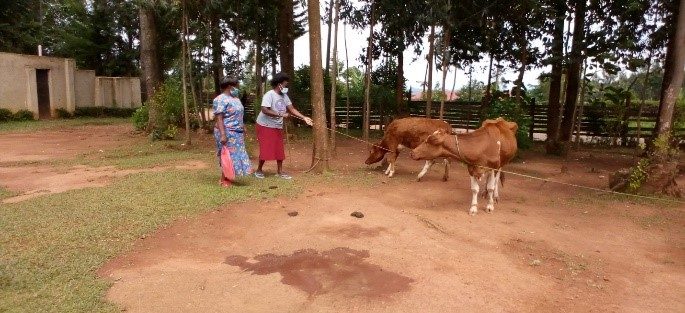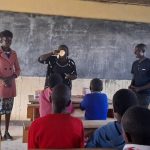SUCCESS STORY 1. Applying the 360° Agri nutrition training
Agripina Mukoyani is one of the beneficiaries of the agrinutrition program under the KCDMS project. She is a married female teacher aged 45 years with 5 children. She comes from Hamisi Sub County in virembe, Vihiga. She states that she is very happy with the program because she has gained a lot of knowledge and skills on various aspects of Agri-nutrition like water harvesting, Kitchen gardening and appropriate technologies since its inception in the area.
Water Harvesting
Agripina was not con
versant with how to properly harvest water, store it and treating it, but the training on the modules focusing on the subject equipped her with enough knowledge on the best ways of water harvesting, storage and treatment hence helping her in cost saving.
“Before purchasing a tank to harvest rainwater, I used to pay someone 10 Kenya shillings per 20-liter jerrican for someone to fetch her water from the nearby river. This was AWFULLY expensive for me as I have a wide range of activities around the home that require water.” “The rainwater that I harvest is sufficient for domestic use including livestock watering, drip irrigation for my vegetables. I am even well stocked for dry seasons as I managed to purchase two water tanks.”
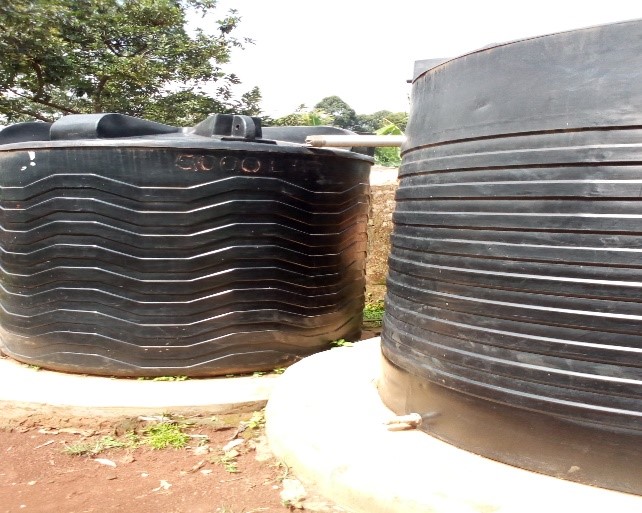
Kitchen gardening
Agrapina Corona pandemic period brought with it lots of challenges but for Agripina she had readily available and a variety of vegetables. She managed to invest in food diversity in her kitchen garden which she had combined with imposed sacks hence her family was able to get enough during the pandemic.
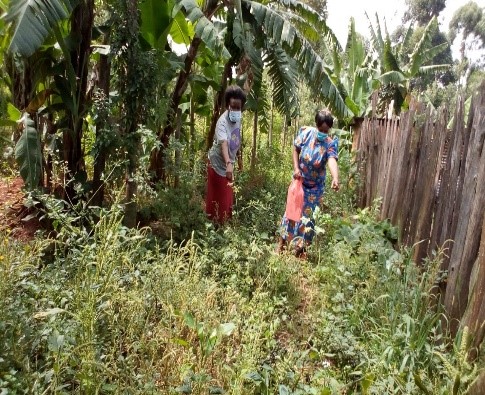
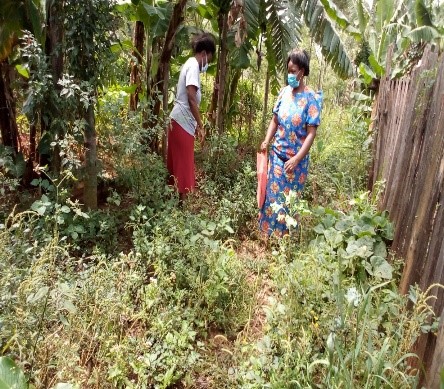
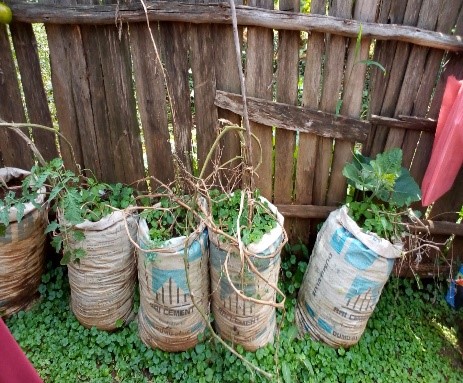
She also learned the importance of consumption of different foods during her agrinutrition training. Some of the vegetables she grows are suza, tomatoes, mito, nderema, murenda, kanzira, saga, sukuma and seveve.
She managed to generate some income from the sell of the tomatoes to her neighbour through the sack gardens which she later used to buy other nutritious foods for her family that she did not grow.
She grows fruits too, such as pawpaw, avocado, parapandi and mangoes.

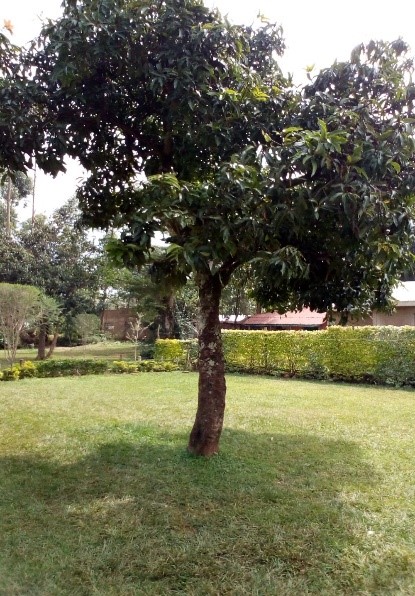

Now she admits of able to meet her family daily food requirements hence a sense of food security and nutrition security. She also shows the food wheel she has hanged in her sitting room. She says that she is now fully guided on food diversity.
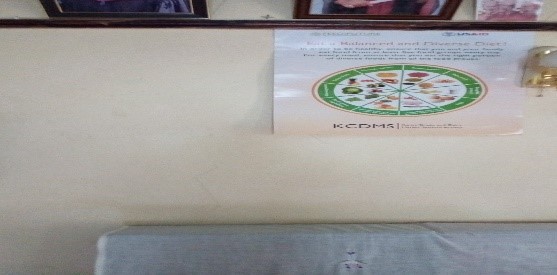
Appropriate technologies
After the training she was able to buy solar that has enabled her light her house when there is no electricity. she states that solar energy is safe, affordable, cheap and is cost effective. She is very happy with the knowledge and skills she acquired during her agrinutrition training.
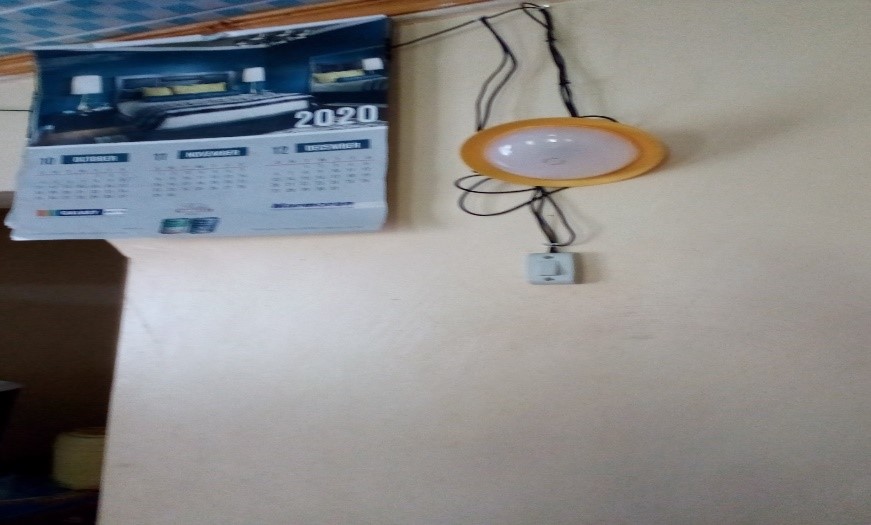
MIXED CROPPING
Agripina says that she now practices mixed cropping. She rears different kind of animals (cow, ducks, and other poultry) and plants various types of crops. She uses the remains of the animals for manure of her crops and does not need to buy fertilizer. This has enabled her save much more.
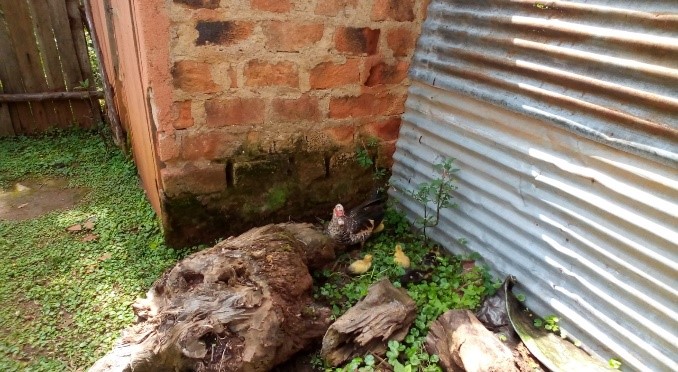

SUCCESS STORY 2
Norah Atieno is one of the beneficiaries of the Agri nutrition training. She is 25 years old a house wife with 4 children. Her last-born daughter is one year three months old. She states that the Agri nutrition training has really empowered her with knowledge on nutrition.
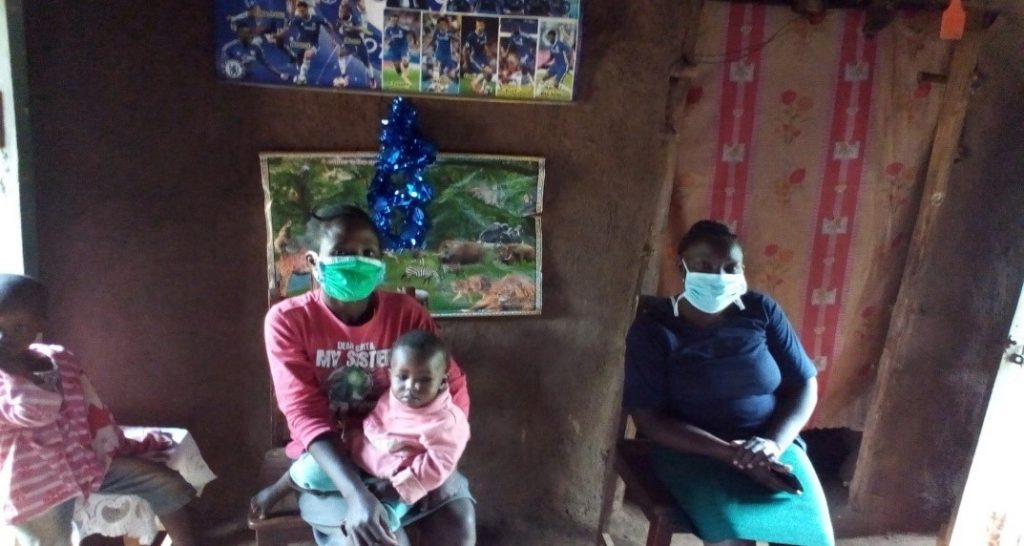
She admits that before the training she could not breastfeed her children when was sick because she had believed that her babies would contract the same illness. Luckily after the training she has learnt that breastfeeding is always important and the benefits of exclusive breastfeeding.
Norah has also learnt about food diversity through Agri nutrition training. She admits that she only knew that balanced diet was all about taking ugali, Sukuma and meat but after the training she has learnt of different food groups that are locally available and she should consume at least five food groups in a day. She has also learnt of the importance of various nutrients in the body.
On the other hand, she says that she has also learnt of adding extra meals beside her 3 main meals. Before that she would mainly feed on liquids(a thermos of tea and porridge) believing that the more she took fluids the more breastmilk she would produce but at the moment, she is well informed on how to eat variety of foods during breastfeeding times.
She also has compost pit making area unlike before where she uses to throw biodegrable garbage everywhere, this has also help her in maintaining high level of hygiene and sanitation. She uses the manure to plant vegetables.

Issues hygiene she says that she has learnt about the five critical times of handwashing. She admits she did not wash her hands after attending to her domestic animals but now she does. Moreover she used to pour water for hand washing in her “marondos” sufuria and all the children would wash their hands one by one in the sufuria but after the training she encourages her children to use soap and flowing water from a jug.
SUCCESS STORY 3
Florence Lupete is one of the beneficiaries of the Agri nutrition program under the KCDMS project. She is a housewife aged 27 years with 3 children. Her lastborn is aged 1-year 10months. She starts by saying that she was able to train on the 14 topics trained.
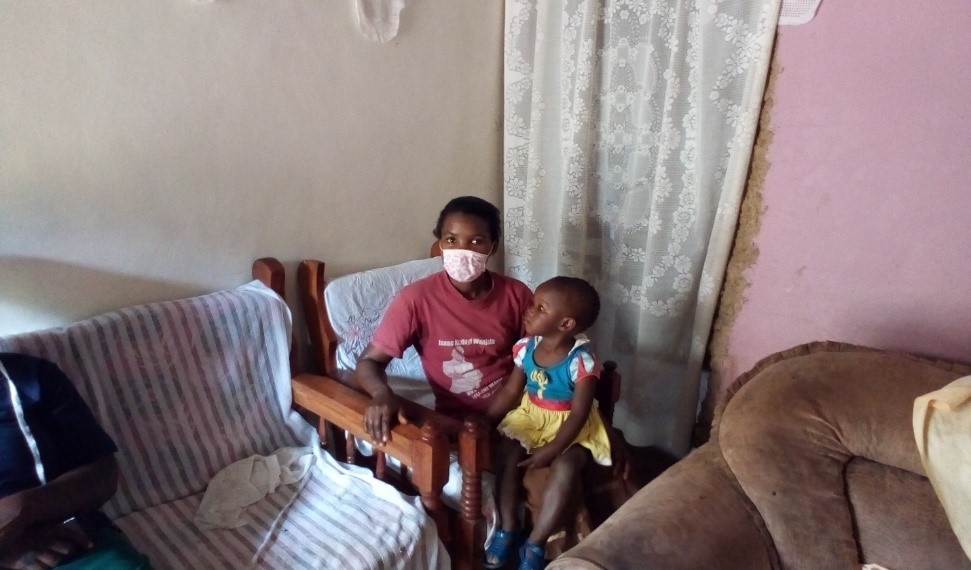
She adds by saying that she has learnt a lot on criteria of complementary feeding. She states that before she would force feed her babies to eat but she has learnt that she should be patient and not force her children to eat their meals. She added by saying that her lastborn mostly does not love feeding but she has learnt to give him small but frequent meals.
Florence also sates how she would force her 1 10/12 years daughter to feed on two cups of food but after the training sessions she has learnt that 1 cup is sufficient for her baby and that 2 cups of food was too much.
She again states how she would practice mixed feeding when her babies were below the age of 6months believing that she had no sufficient milk but she has learnt that exclusive breastfeeding is possible when you relax and feed well
Florence has developed compost pit where she throws all garbage in a best way so far. She has a hand washing plan to help in maintaining high level of hygiene and sanitation hence helping reducing chances of contracting some of the communicable diseases.
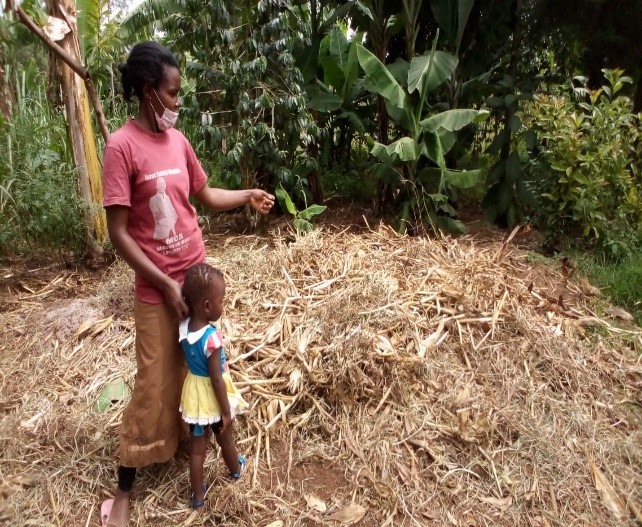
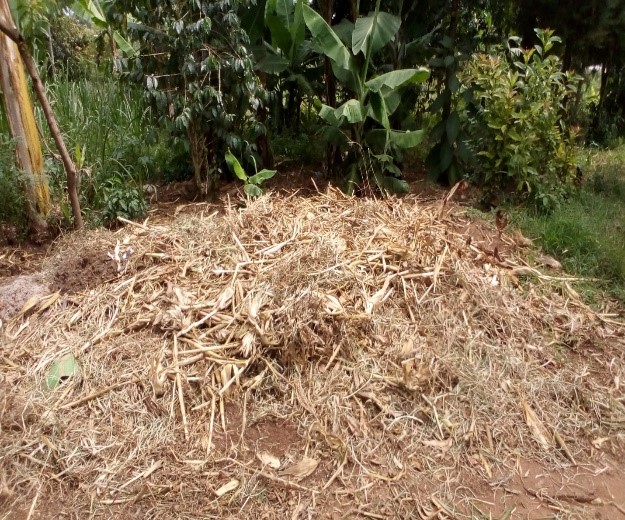
She also has a kitchen garden in the backyard of her house. She says that through the trainings she learnt that she has to plant various types of vegvetables. She now plants vegeatables such as bananas, seveve, kunde, kanzira, murenda and saga.
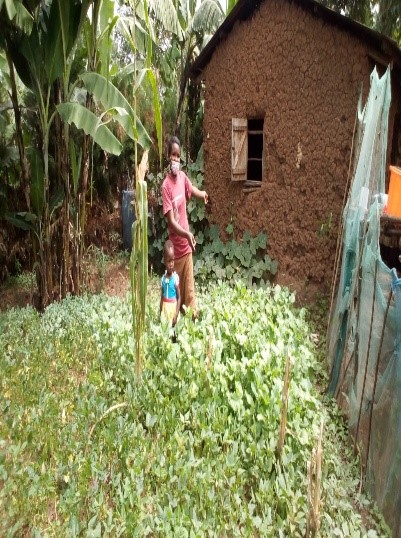
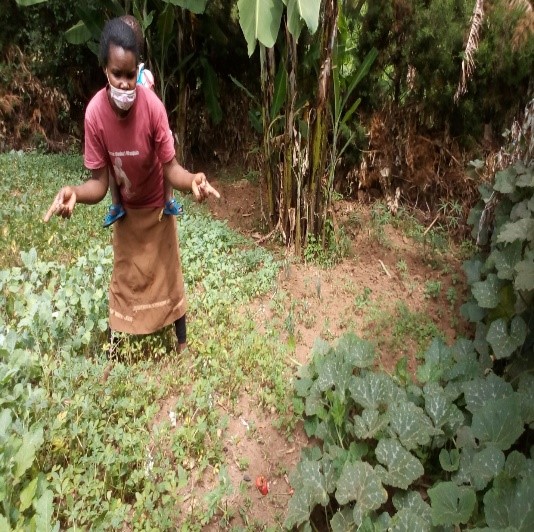
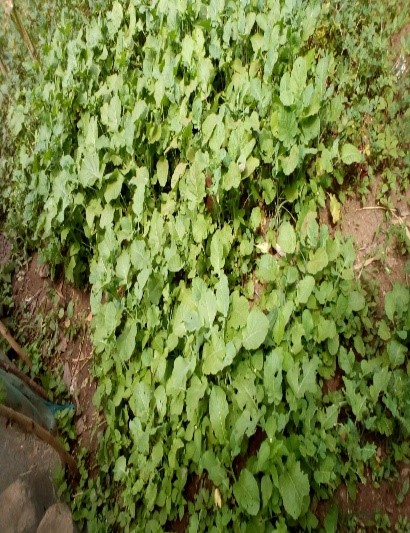
For water harvesting she says that she is in the process of buying a water tank that will help store her harvested water. She has been able to set up a gutter that will trap the rainwater. She says that she mostly used river water but having learnt on importance of water harvesting she is going to try it although the water tank would be expensive but worth it.

SUCCESS STORY 4
Hellen Iminza . We met Hellen Iminza a widow. She says that during the trainings she pictured herself out when the lead farmer Pamela described how farmers sell all their farm produces to buy other things. She described to me how she has faced a lot of challenges on land ownership since her husband was no more.
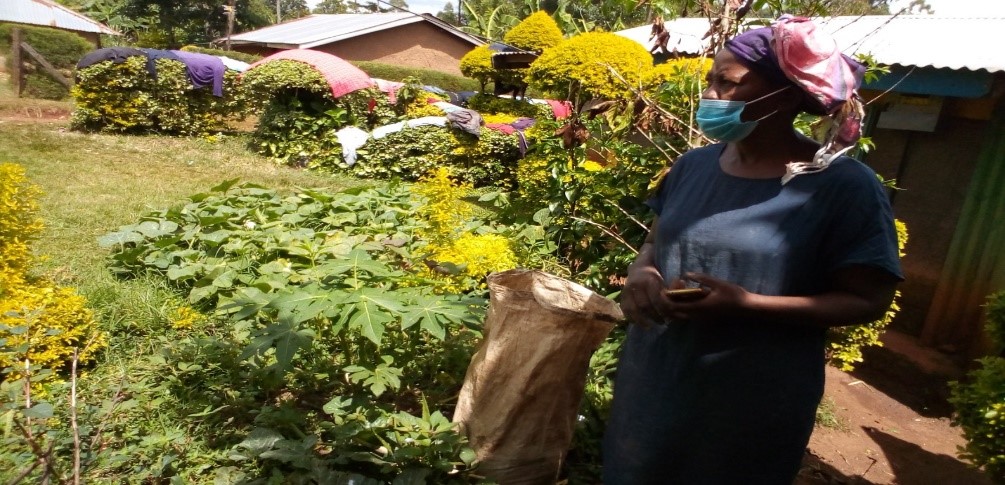
She was allocated a little piece of land; she used the little available space for construction of her house and the rest squeezed for farming. She even states that “hata mkiona flower bed yangu imejaa mboga na wala si maua” as shown in the picture below
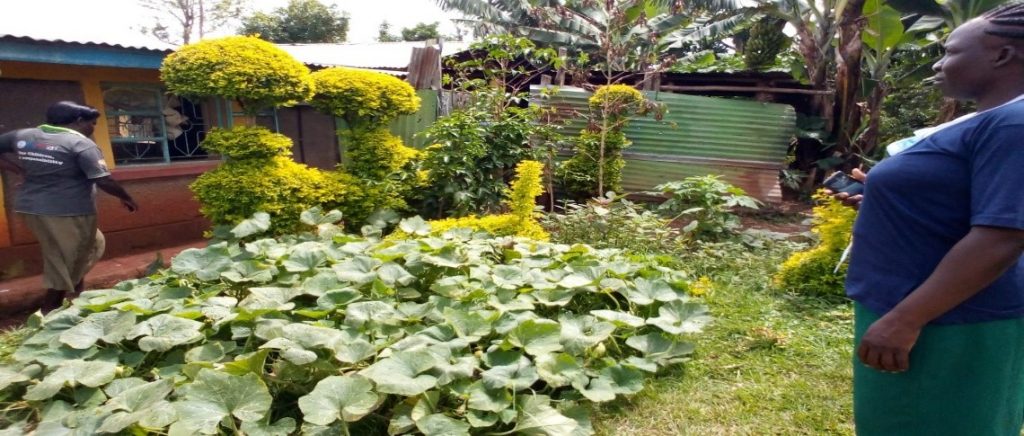
She is able to rear poultry and cows. She says that through selling of some of her produce (milk, eggs) she has been able to carter for other bills. She is also in the process of setting up sack gardens where she would be able to plant different types of vegetables.
Hellen describes how rearing of animals (hens/cows) has enabled her get manure and she does not have to buy. She uses the manure for her vegetables as shown below.
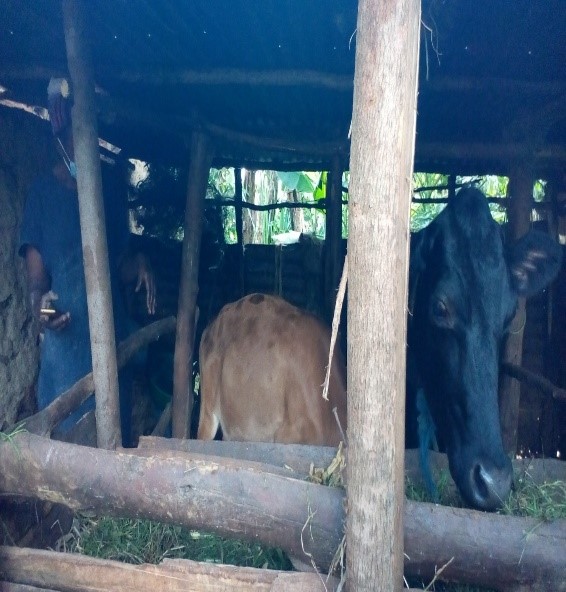
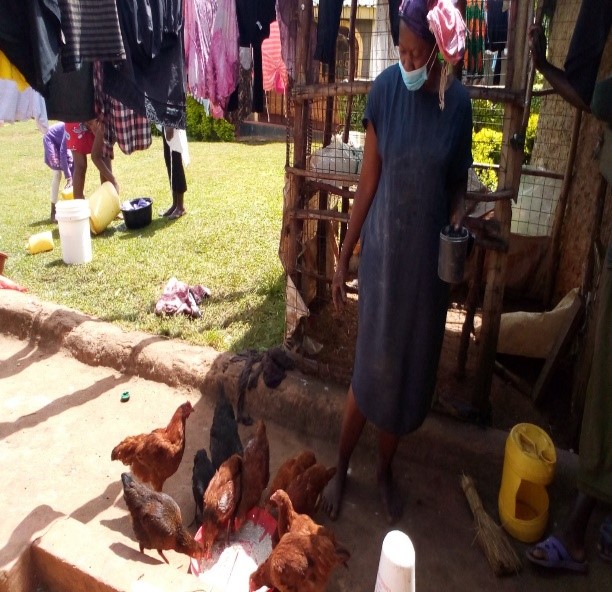
She has also set up a small kiosk behind her house where she sells her farm produce but says she leaves some for her family.
Finally, she admits that the Agri nutrition programme has really empowered her and made her life better.

